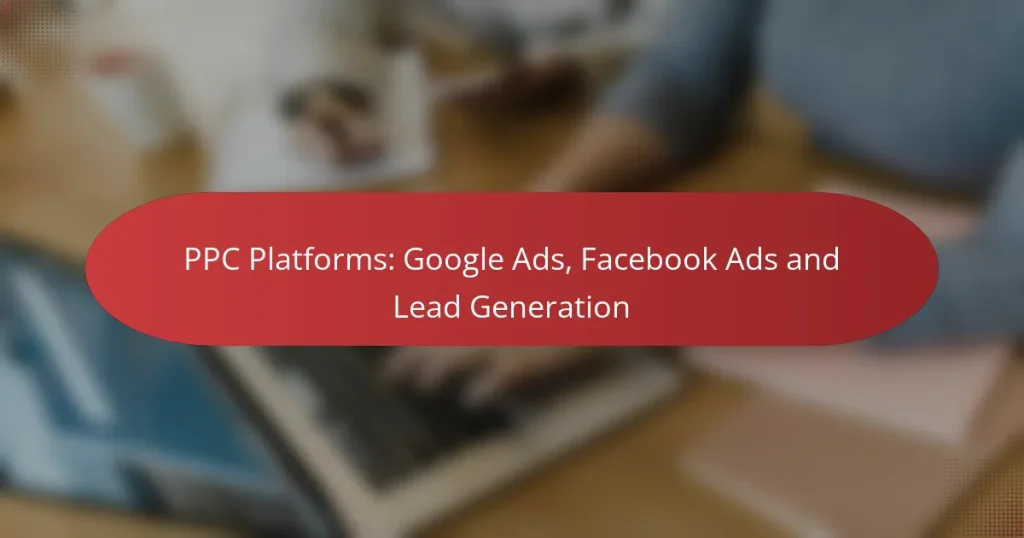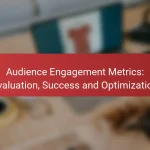In the realm of digital marketing, Google Ads and Facebook Ads serve as essential platforms for effective lead generation. By leveraging their unique targeting capabilities and ad formats, businesses can engage specific audiences and convert them into valuable leads. Understanding the strengths of each platform is crucial for aligning advertising strategies with campaign goals and budget considerations.
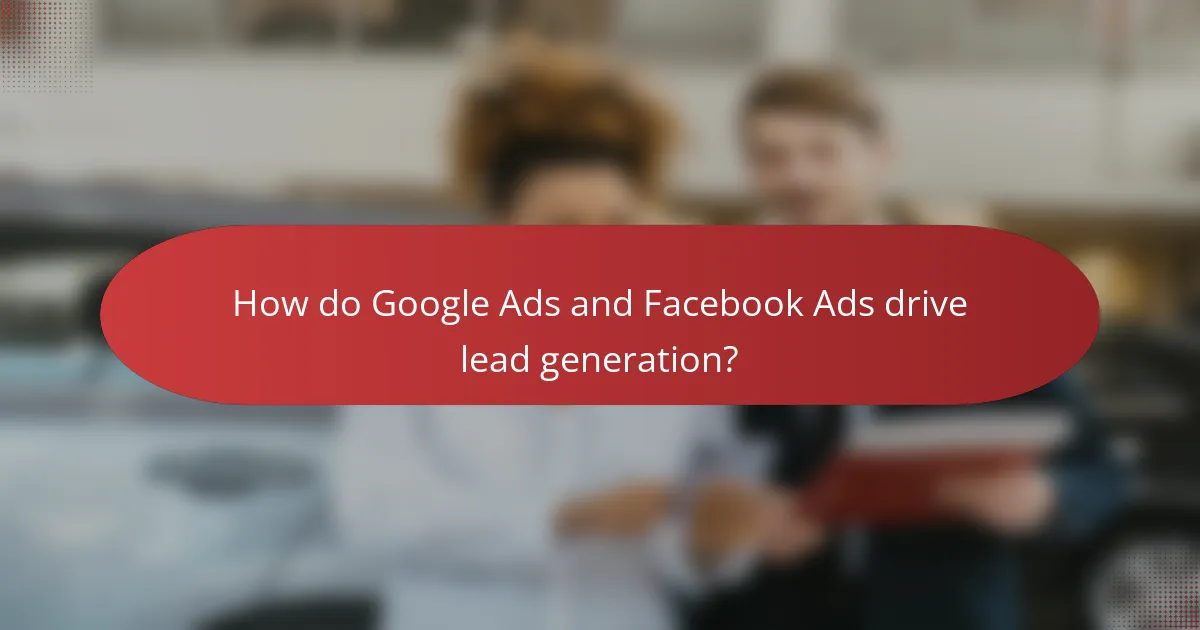
How do Google Ads and Facebook Ads drive lead generation?
Google Ads and Facebook Ads are powerful tools for driving lead generation by targeting specific audiences and measuring engagement. Both platforms offer unique features that can help businesses attract potential customers and convert them into leads.
Google Ads targeting options
Google Ads provides various targeting options to reach potential leads effectively. Advertisers can use keyword targeting, location targeting, and demographic targeting to ensure their ads appear to the right audience. For example, businesses can target users searching for specific terms related to their products or services, which can lead to higher conversion rates.
Additionally, Google Ads allows for remarketing, enabling businesses to show ads to users who have previously interacted with their website. This approach can significantly enhance lead generation by reminding potential customers of their interest.
Facebook Ads audience segmentation
Facebook Ads excels in audience segmentation, allowing advertisers to create highly targeted campaigns based on user interests, behaviors, and demographics. Businesses can define their audience by factors such as age, location, interests, and even online behaviors, which helps in crafting personalized ad experiences.
Utilizing Custom Audiences and Lookalike Audiences can further enhance lead generation. Custom Audiences allow businesses to retarget existing customers, while Lookalike Audiences help find new potential leads that share similar characteristics with existing customers.
Conversion tracking methods
Effective conversion tracking is crucial for measuring the success of lead generation efforts on both Google Ads and Facebook Ads. Google Ads offers conversion tracking through its tracking code, which can be placed on key pages such as thank-you or confirmation pages. This allows businesses to see which ads are driving leads and optimize their campaigns accordingly.
Facebook Ads provides its own conversion tracking tool, the Facebook Pixel, which tracks user interactions on a website after clicking on an ad. By analyzing this data, businesses can refine their targeting strategies and improve their return on investment for lead generation campaigns.
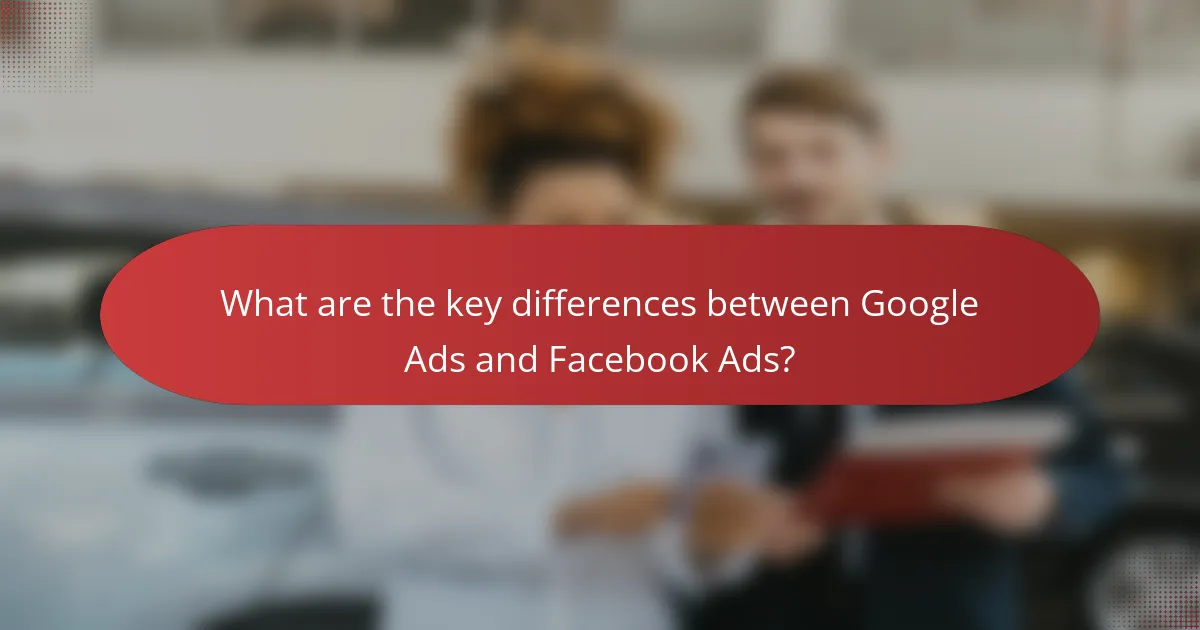
What are the key differences between Google Ads and Facebook Ads?
The key differences between Google Ads and Facebook Ads lie in their targeting methods and ad formats. Google Ads primarily targets users based on search intent, while Facebook Ads focus on user demographics and interests, allowing for different advertising strategies.
Ad formats comparison
Google Ads offers various ad formats, including text ads, display ads, shopping ads, and video ads. Text ads appear in search results, while display ads are shown on partner websites. Facebook Ads, on the other hand, provide formats such as image ads, video ads, carousel ads, and collection ads, which are designed to engage users in a more visually appealing way.
For example, a Google text ad might be effective for capturing users actively searching for a specific product, while a Facebook carousel ad can showcase multiple products in a single ad, appealing to users’ interests as they scroll through their feeds.
Cost structures analysis
Google Ads typically operates on a pay-per-click (PPC) model, meaning advertisers pay each time a user clicks on their ad. Costs can vary widely based on competition for keywords, often ranging from a few cents to several dollars per click. Facebook Ads generally use a cost-per-impression (CPM) or cost-per-click (CPC) model, with CPM rates usually lower than Google Ads, making it potentially more cost-effective for brand awareness campaigns.
Advertisers should consider their budget and goals when choosing between platforms. For instance, if the goal is immediate conversions, Google Ads may be more suitable, while Facebook Ads might be better for building brand awareness at a lower cost.
Best use cases for each platform
Google Ads is ideal for businesses looking to capture high-intent traffic, such as e-commerce sites or service providers. It works well for targeting users actively searching for specific products or services, making it effective for lead generation and direct sales.
Facebook Ads excels in targeting specific demographics and interests, making it suitable for brand awareness, engagement, and retargeting campaigns. Businesses that want to build a community or promote lifestyle products often find Facebook Ads to be more effective due to its visual nature and extensive targeting options.
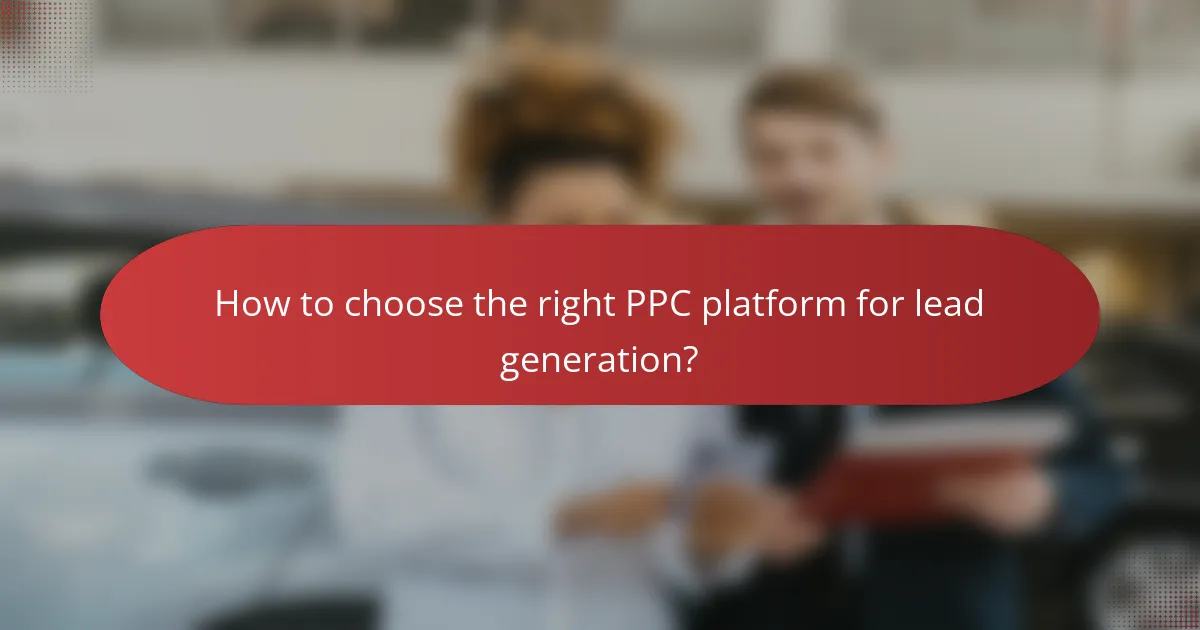
How to choose the right PPC platform for lead generation?
Selecting the right PPC platform for lead generation involves understanding your target audience, budget, and campaign goals. Each platform, like Google Ads or Facebook Ads, has unique strengths that can align with different marketing strategies.
Target audience considerations
Identifying your target audience is crucial when choosing a PPC platform. Google Ads is effective for capturing intent-driven users actively searching for products or services, while Facebook Ads excels in reaching users based on demographics and interests.
Consider where your audience spends their time online. If your target demographic is younger, platforms like Instagram (part of Facebook Ads) may yield better results. Conversely, if your audience is more professional, LinkedIn Ads could be worth exploring.
Budget allocation strategies
Your budget should reflect the platform’s cost structure and your marketing objectives. Google Ads typically operates on a pay-per-click basis, which can lead to higher costs for competitive keywords. Facebook Ads, on the other hand, often allows for more flexible budgeting with options for cost-per-impression or cost-per-click.
Allocate your budget based on performance metrics. Start with a small test budget on each platform to gauge effectiveness, then scale up on the platform that delivers the best return on investment (ROI).
Campaign goals alignment
Aligning your campaign goals with the right PPC platform is essential for success. If your goal is to generate immediate leads, Google Ads may be more suitable due to its search intent focus. For brand awareness or engagement, Facebook Ads can provide broader reach and targeting capabilities.
Define clear objectives, such as increasing website traffic, generating leads, or boosting sales. Use these goals to guide your platform choice and campaign design, ensuring that your selected PPC strategy supports your overall marketing aims.
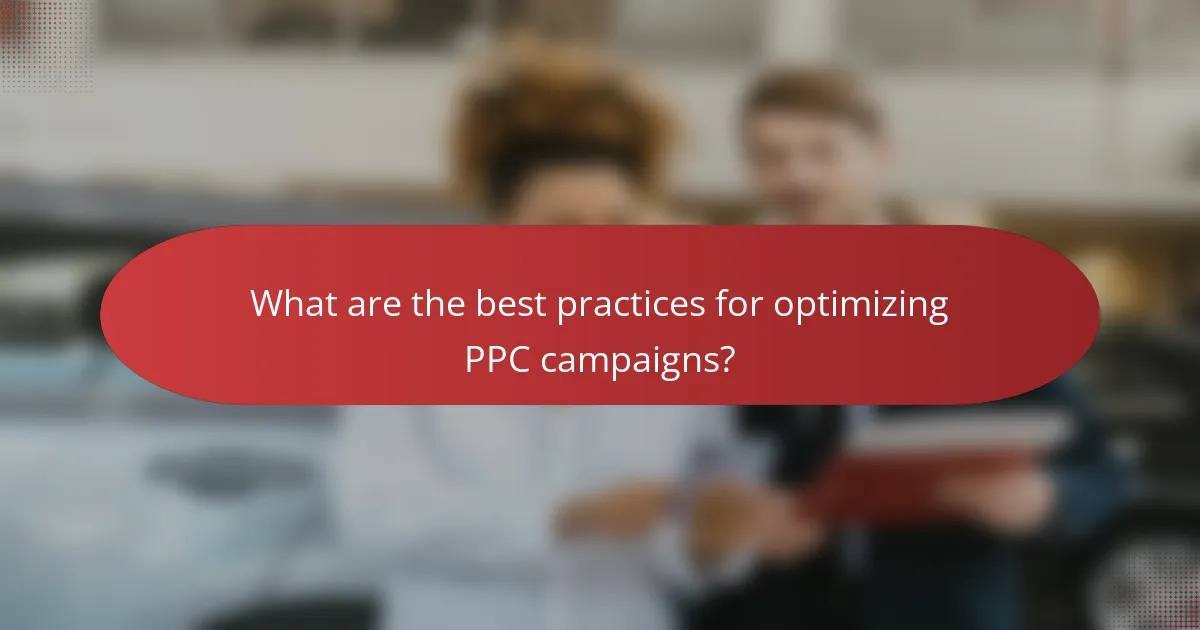
What are the best practices for optimizing PPC campaigns?
To optimize PPC campaigns effectively, focus on continuous improvement through data analysis, strategic adjustments, and audience targeting. Implementing best practices can significantly enhance ad performance and return on investment.
Keyword research techniques
Effective keyword research is crucial for targeting the right audience in PPC campaigns. Utilize tools like Google Keyword Planner or SEMrush to identify relevant keywords with high search volumes and manageable competition. Aim for a mix of short-tail and long-tail keywords to capture both broad and specific search intents.
Consider the intent behind keywords, categorizing them into informational, navigational, and transactional types. This helps in crafting ads that resonate with users’ needs, ultimately improving click-through rates and conversions.
Ad copywriting tips
Compelling ad copy is essential for attracting clicks and driving conversions. Start with a strong headline that includes your primary keyword and addresses the user’s pain point or desire. Use clear and concise language, and include a strong call to action that encourages users to take the next step.
Incorporate emotional triggers and unique selling propositions to differentiate your ads from competitors. Testing different variations of ad copy can reveal what resonates best with your audience, allowing for ongoing refinement.
A/B testing strategies
A/B testing is a powerful method for optimizing PPC campaigns by comparing two versions of an ad to determine which performs better. Focus on one variable at a time, such as headlines, images, or calls to action, to isolate the impact of each change. Run tests long enough to gather statistically significant data.
Regularly analyze the results and apply the insights to future campaigns. Avoid common pitfalls like testing too many elements simultaneously or neglecting to pause underperforming ads, as these can skew results and waste budget.
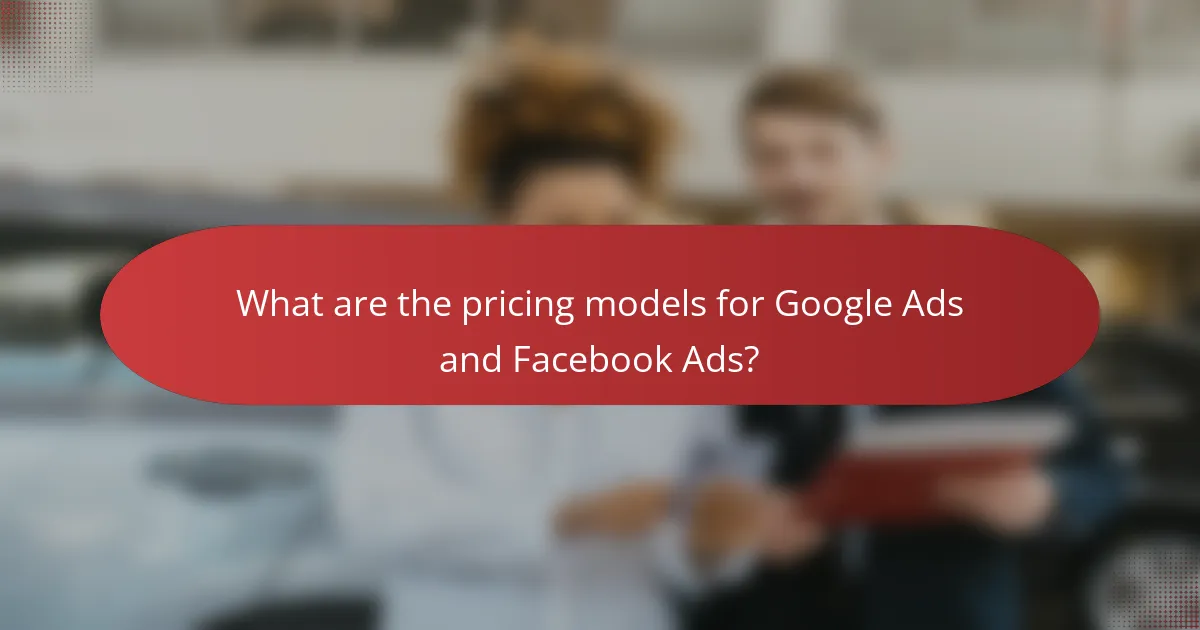
What are the pricing models for Google Ads and Facebook Ads?
Google Ads and Facebook Ads primarily utilize cost-per-click (CPC) and cost-per-thousand impressions (CPM) pricing models. These models allow advertisers to pay based on user engagement or visibility, influencing how campaigns are structured and budgeted.
CPC vs. CPM pricing
CPC pricing charges advertisers each time a user clicks on their ad, making it ideal for campaigns focused on driving traffic or conversions. In contrast, CPM pricing charges based on every thousand impressions, which is suitable for brand awareness campaigns aiming to maximize visibility.
When choosing between CPC and CPM, consider your campaign goals. If the objective is to generate leads or sales, CPC may be more effective. For campaigns aimed at increasing brand recognition, CPM could provide better value.
Budgeting for lead generation
Effective budgeting for lead generation on Google Ads and Facebook Ads requires understanding your target cost per lead (CPL). A common approach is to set a monthly budget based on historical performance or industry benchmarks, typically ranging from a few hundred to several thousand dollars depending on the market.
To optimize your budget, regularly analyze campaign performance and adjust bids accordingly. Avoid overspending by setting daily limits and closely monitoring metrics like conversion rates and CPL. Consider using automated bidding strategies to maximize your budget’s efficiency.
